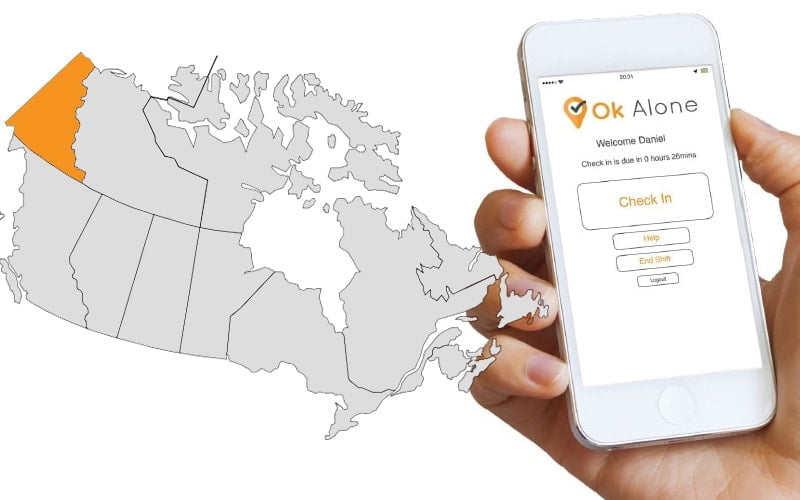As Canada is divided into federal, provincial and territorial jurisdictions here is the legislation and policy pertaining to workers and lone workers in Yukon, including the associated regulations.

Summary of Yukon Lone Worker Legislation
The Yukon does not have specific legislation for lone workers other than article 27 Duties of employers (1)(f) which states; ‘Every employer must, as far as is reasonably practicable, make efforts to check the health and safety of the employer’s workers in situations when workers might not be able to secure assistance in the event of injury or other misfortune.’
Yukon introduced a new Act, which came into effect on July 1, 2022, combining the territory’s previous Workers’ Compensation Act and its Occupational Health and Safety Act to become the Worker Safety and Compensation Act. The main purposes of the Act are to prevent workplace injuries and to care for injured workers.
WORKERS’ SAFETY AND COMPENSATION ACT 2022
PART 3
WORKPLACE HEALTH AND SAFETY DIVISION 2
DUTIES OF EMPLOYERS, WORKERS AND OTHERS
27 Duties of employers
(1) Every employer must, as far as is reasonably practicable,
(a) ensure that the workplace, equipment, work techniques, procedures and systems under the employer’s control ensure the health and safety of its workers;
(b) ensure that the employer’s workers
(i) are made aware of all known or reasonably foreseeable hazards or potential hazards to which they are likely to be exposed by their work,
(ii) are informed of their rights, responsibilities and duties under this Part,
(iii) comply with this Part and the regulations;
(c) provide to the employer’s workers the information, instruction, training, supervision and facilities necessary to ensure that work is performed in a safe manner;
(d) consult and co-operate with the committee or worker health and safety representative, as applicable, regarding the duties and matters of the committee or worker health and safety representative under this Part;
(e) ensure that the supervisors employed by the employer
(i) are competent, because of knowledge, training or experience, to ensure that work is performed in a safe manner, and
(ii) are familiar with this Part and the regulations that are applicable to the work being supervised;
(f) make efforts to check the health and safety of the employer’s workers in situations when workers might not be able to secure assistance in the event of injury or other misfortune;
(g) ensure that the employer’s workers use the protective equipment and wear the protective clothing required to be used or worn under this Part; and
(h) take all precautions and adopt and carry out all work techniques, procedures and systems under the employer’s control that will prevent or reduce the risk of injury or death to other employers’ workers and other persons at or near the workplace.

As an expert in lone worker content management, I possess an extensive knowledge base and experience in the area of lone working and safety monitoring. My expertise in this field encompasses a wide range of areas, including risk assessment, training, communication, and technology. I have a deep understanding of the unique risks associated with lone workers and have researched and written many projects and articles to educate people in how to mitigate these risks.
Throughout my time with Ok Alone, I have kept up to date with technological developments, legislative changes and regulations that have been introduced to help organizations ensure the safety of their lone workers.

